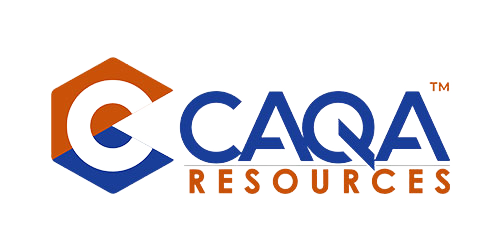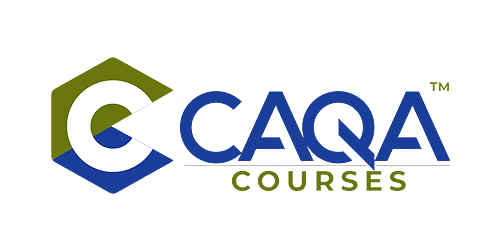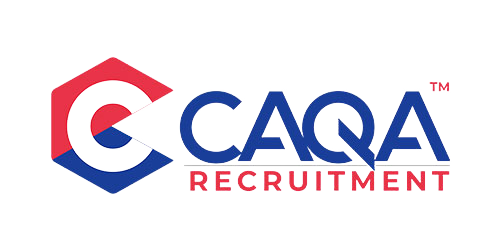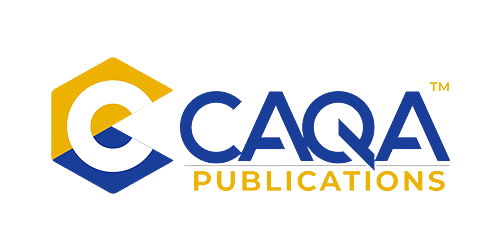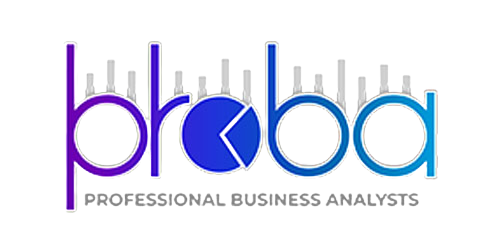This article serves as a comprehensive guide for Registered Training Organisations (RTOs) to prepare for audits effectively, addressing the key elements of audit readiness. It covers the importance of understanding the audit type, reviewing relevant standards and previous audits, conducting a self-assessment, preparing staff and stakeholders, and organising logistics. By following these steps, RTOs can ensure a smooth audit process, avoid common mistakes, and use the audit as an opportunity for continuous improvement.
The phrase "Failing to plan is planning to fail" rings especially true when it comes to audits for Registered Training Organisations (RTOs). Audits are an essential part of the process by which RTOs ensure their operations meet the necessary regulatory standards, and they play a significant role in safeguarding the quality of education and training provided. However, audits can be stressful if not prepared properly. RTOs that fail to plan adequately for audits are often caught off-guard by compliance issues, delays, and confusion that could otherwise be avoided.
The Australian Skills Quality Authority (ASQA) conducts audits to assess whether RTOs comply with the Standards for Registered Training Organisations (RTOs) 2015. The audit process can range from routine re-registration audits to more specific scope audits, but regardless of the type, a systematic and strategic approach to preparation is essential to ensure that the RTO passes with minimal disruption.
This article will guide you through the essential steps that every RTO must take to prepare for an audit. We will explore the importance of understanding the audit type, reviewing the applicable standards and legislation, conducting self-assessments, preparing staff and stakeholders, and organising the logistics of the audit. By following these steps, RTOs can manage audits more effectively, reduce stress, and use audits as an opportunity to strengthen internal processes and improve the overall quality of training and assessment.
1. KNOW What Type of Audit It Is
The first step in preparing for an audit is understanding what type of audit you are facing. Not all audits are the same, and different types of audits have different requirements, timelines, and areas of focus. RTOs need to be fully aware of the type of audit they are about to undergo so that they can allocate appropriate resources, tailor their preparation, and focus on the right areas.
Types of Audits:
- Initial Audit: This type of audit is required when an RTO is applying for registration. The audit assesses whether the RTO is capable of meeting the Standards for RTOs 2015 and if it has the necessary systems in place to operate successfully and deliver quality training.
- Re-registration Audit: Every RTO must undergo a re-registration audit to maintain its registration. This audit focuses on ensuring that the RTO continues to meet the required standards and that its operations remain compliant.
- Compliance Audit: A compliance audit is conducted if there are concerns about an RTO's adherence to regulatory standards. This can occur at random or following complaints, incidents, or failure to meet previous audit requirements.
- Scope Audit: A scope audit occurs when an RTO applies to add new qualifications or courses to its registration. The audit will assess the RTO's ability to deliver those specific programs and ensure they meet the necessary standards.
- Performance Assessment: A comprehensive audit that evaluates the RTO's performance against the Standards and legislation, focusing on the student experience and outcomes.
How to Prepare for Each Audit Type:
- Understand the focus areas: For initial audits, focus on proving that you have the systems in place to meet the standards. For re-registration and compliance audits, focus on demonstrating ongoing compliance and continuous improvement. For scope audits, ensure your resources, trainers, and assessments are aligned with the new courses being introduced.
- Review previous audit findings: If your RTO has undergone audits before, use the outcomes of these audits as a reference point. Review any non-compliance findings and ensure that these areas have been addressed before the upcoming audit.
2. READ the Standards, Legislation, and Contracts
Once you know the type of audit, the next step is to review the relevant standards, legislation, and contracts that the audit will assess your RTO against. The audit process will primarily focus on how well the RTO complies with the Standards for RTOs 2015, but it is also essential to be aware of other relevant legislation that impacts your operations.
Key Areas to Review:
- The Standards for RTOs 2015: These are the national standards that all RTOs must meet to ensure that they provide high-quality training and assessment services. The standards cover a wide range of areas, including student management, assessment practices, trainer qualifications, and continuous improvement processes.
- The Australian Qualifications Framework (AQF): The AQF defines the levels and requirements for qualifications in the Australian education system. It is crucial that RTOs ensure their qualifications align with AQF levels and outcomes.
- Legislation: There are various pieces of legislation that may apply to RTOs, including the VET Quality Framework, Work Health and Safety (WHS) Act, Privacy Act, and more. Understanding these laws ensures that the RTO is operating legally and meeting all compliance requirements.
- Contractual Obligations: Review any contracts your RTO has with stakeholders, including students, employers, and partners. Ensure that these contracts align with the services and qualifications your RTO provides.
How to Prepare:
- Familiarise yourself with all relevant documents: Review the Standards for RTOs 2015, related legislation, and any applicable contracts to ensure that your RTO’s operations are fully compliant.
- Identify any gaps: Use the audit preparation process to identify any areas where your RTO may not be fully compliant with the standards or legislation. Address these gaps before the audit.
- Update policies and procedures: Ensure that your RTO’s policies and procedures align with the standards and regulations. Update any documents that may need revision due to changes in the regulatory environment.
3. Review Previous Audits, Conduct Self-Assessment and Risk Assessment
Before the audit, RTOs should conduct a thorough self-assessment to evaluate their compliance with the standards. This should include a review of previous audit findings, any corrective actions taken since the last audit, and a risk assessment to identify potential compliance issues before the audit.
Why This Is Important:
- Learn from past mistakes: If previous audits identified areas for improvement, take the time to review the corrective actions that were implemented. Ensure that these actions have been effective and have not resulted in new issues.
- Identify risks early: A self-assessment and risk assessment will help you identify any areas of non-compliance or potential risks that could impact the audit process. By identifying these risks early, you can take proactive steps to address them before the audit.
How to Conduct Self-Assessment and Risk Assessment:
- Review audit history: Look back at the findings from previous audits and ensure that any outstanding issues have been addressed. If the RTO received non-compliance findings, verify that corrective actions have been implemented and that these areas are no longer a concern.
- Perform a risk assessment: Evaluate your current processes and operations to identify areas of risk. This can include reviewing student files, training materials, trainer qualifications, and assessment methods. Ensure that all systems are working effectively and that any potential risks are mitigated before the audit.
4. Prepare Staff: Who Should Be Involved and How to Control Behavior and Emotions
Staff preparation is one of the most critical aspects of audit readiness. The audit process can be stressful for staff, especially if they are unsure of what to expect or how to handle auditor questions. It is essential to prepare staff not just with the correct information, but also with the skills to stay calm, focused, and professional throughout the audit.
Why Staff Preparation is Critical:
- Effective communication: Well-prepared staff will be able to communicate effectively with auditors, answer questions clearly, and provide accurate evidence when requested.
- Calm and professional demeanour: During an audit, emotions can run high, especially if there are concerns about compliance. Staff must be prepared to manage their emotions and remain professional, even in stressful situations.
- Avoiding mistakes: Properly trained staff will be less likely to make mistakes or provide inconsistent information during the audit, which can lead to non-compliance findings.
How to Prepare Staff:
- Assign clear roles: Designate specific staff members to handle different aspects of the audit. For example, someone should be in charge of coordinating documentation, while others can focus on answering questions from auditors.
- Provide training on audit processes: Hold training sessions to educate staff about the audit process, what auditors will be looking for, and how to respond to common questions. Ensure they understand the terminology and procedures involved in the audit.
- Control behaviour and emotions: Encourage staff to stay calm, professional, and composed during the audit. Remind them that audits are not personal and that they are an opportunity for the organisation to improve.
5. Prepare Stakeholders: Students, Employers, and Partners
Audits often require input from various stakeholders, including students, employers, and industry partners. These groups may need to provide feedback, answer questions, or confirm certain aspects of the RTO’s operations.
Why Stakeholder Preparation is Important:
- Transparency and accountability: Engaging stakeholders in the audit process ensures transparency and helps maintain accountability within the RTO.
- Demonstrating compliance: Feedback from students, employers, and partners may be necessary to demonstrate compliance with specific standards related to training delivery, assessment, and industry relevance.
How to Prepare Stakeholders:
- Communicate with students and employers: Let them know that an audit is scheduled and explain their role in the process. If students or employers need to provide feedback or verification, make sure they are aware of what is required.
- Ensure industry relevance: Ensure that the training provided aligns with industry expectations and that employers are prepared to confirm the relevance of your qualifications during the audit.
6. Organise Logistics: Where, When, and Who
The logistics of the audit are crucial to ensuring that everything runs smoothly. This includes organising the location of the audit, ensuring staff availability, and allocating sufficient time for auditors to review evidence and ask questions.
Why Logistics Matter:
- Efficiency and smooth process: Well-organised logistics ensure that the audit process is efficient and that auditors have everything they need to complete the process in a timely manner.
- Avoiding disruptions: Proper planning ensures that staff are available when needed, and that there is minimal disruption to training or other organisational activities during the audit.
How to Organise Logistics:
- Schedule audit times: Coordinate with auditors to agree on the date and time of the audit. Ensure that key staff members are available during these times and that all necessary evidence is prepared.
- Allocate sufficient time: Ensure that there is adequate time for the auditors to review documentation, conduct interviews, and address any questions. Avoid overloading the audit schedule, which could lead to a rushed process.
- Provide necessary resources: Make sure that all staff involved in the audit have the resources they need to perform their roles effectively, including access to documentation, systems, and staff.
Planning for Success
The audit process is an essential component of maintaining regulatory compliance and ensuring the quality of training and assessment in an RTO. However, RTOs must recognise that "failing to plan is planning to fail." By understanding the audit type, reviewing standards and legislation, conducting self-assessments, preparing staff and stakeholders, and organising logistics, RTOs can ensure a smooth audit process and achieve better outcomes.
Proper planning not only helps RTOs pass audits but also provides an opportunity for continuous improvement. By making audit preparation a priority and using audits as a tool for refinement, RTOs can enhance their operations, improve student outcomes, and ensure long-term success.









